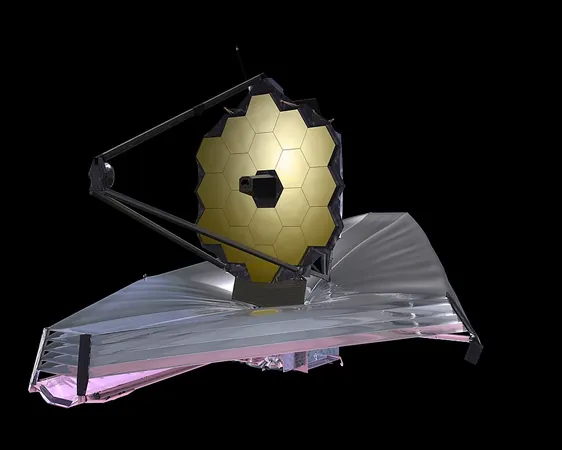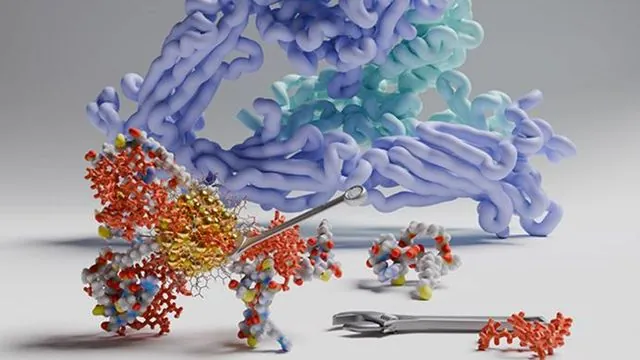
Cosmic Breakthrough: James Webb Space Telescope Confirms Hubble's Constant with Stunning Precision!
2024-11-17
Author: Daniel
Introduction
In an exciting development that has astronomical implications, the James Webb Space Telescope (JWST) has validated measurements of the Hubble Constant made by its predecessor, the Hubble Space Telescope (HST). This momentous discovery highlights not only the collaboration of two of humanity's greatest tools for exploring the universe but also sheds light on one of the most debated constants in cosmology.
Understanding the Hubble Constant
The Hubble Constant (H0) is a crucial figure in understanding the expansion of our universe, first introduced by the pioneering astronomer Edwin Hubble in 1929. It establishes the relationship between the speed of distant galaxies and their distances from Earth, measured in kilometers per second per megaparsec. Knowing this constant helps scientists decipher not just the rate of the universe's expansion but also its age, size, and ultimate fate.
New Research and Methodology
In a recent publication, a team led by Adam G. Riess from John Hopkins University has utilized JWST's sophisticated technology to refine prior studies that employed HST data. They focused particularly on the cepheid/supernova distance ladder. By observing cepheid variable stars and Type Ia supernovae—objects renowned for their consistent brightness—researchers can determine cosmic distances, leading to more accurate calculations of H0.
Addressing Hubble Tension
Throughout the years, numerous attempts have been made to pinpoint H0's exact value using various instruments, including analyses of the cosmic microwave background. However, these attempts have resulted in a perplexing discrepancy known as “Hubble tension,” as different methods yield contrasting values for the constant. With the JWST’s advanced capabilities, scientists are optimistic about bridging these discrepancies and validating past studies.
Challenges in Determining H0
To achieve a precise determination of H0 through the cepheid/supernova approach, researchers require a large enough sample of both cepheids and supernovae, a task that has proven challenging. Nevertheless, the team also explored alternative methods, including the luminosity observations of the brightest red giant branch stars and specific types of carbon-rich stars, which also serve as standard candles to measure distance in the universe.
Findings and Implications
The combined measurements from JWST conclude that the value of H0 stands at 72.6 ± 2.0 km s⁻¹ Mpc⁻¹. When compared with HST's findings, which place H0 at 72.8 km s⁻¹ Mpc⁻¹, it appears that this cosmic puzzle is slowly piecing itself together. Though it may take additional years of research and more JWST observations to match the extensive sample of supernova data provided by HST, this new validation represents a significant stride in our quest to understand the cosmos.
Conclusion
So, what does this mean for our understanding of the universe? As scientists continue to refine the value of Hubble’s Constant, the implications for cosmology become even more profound. This breakthrough is a reminder of how far we’ve come in unraveling the mysteries of space, and it raises tantalizing questions about what we might discover next! Keep your eyes on the skies – the universe has many more secrets waiting to be uncovered!




 Brasil (PT)
Brasil (PT)
 Canada (EN)
Canada (EN)
 Chile (ES)
Chile (ES)
 España (ES)
España (ES)
 France (FR)
France (FR)
 Hong Kong (EN)
Hong Kong (EN)
 Italia (IT)
Italia (IT)
 日本 (JA)
日本 (JA)
 Magyarország (HU)
Magyarország (HU)
 Norge (NO)
Norge (NO)
 Polska (PL)
Polska (PL)
 Schweiz (DE)
Schweiz (DE)
 Singapore (EN)
Singapore (EN)
 Sverige (SV)
Sverige (SV)
 Suomi (FI)
Suomi (FI)
 Türkiye (TR)
Türkiye (TR)